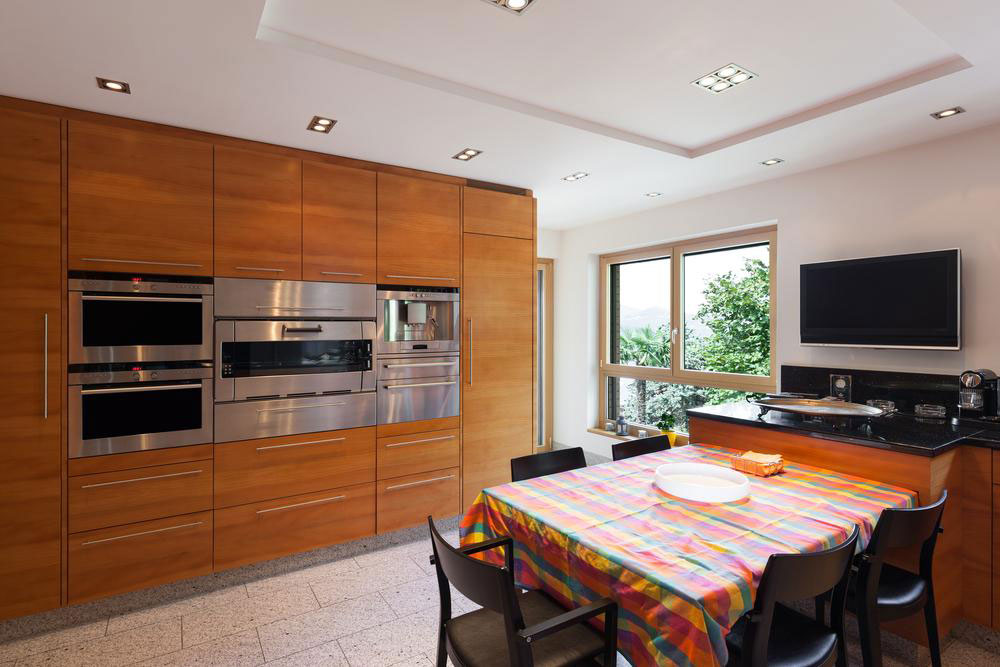The Advantages of Choosing a Curved Television: Features, Benefits, and Trends
Explore the innovative features and advantages of curved televisions, from immersive viewing experiences to aesthetic appeal. Learn which models suit your needs and how to choose the right curved TV for your home. Discover the latest trends and technologies to upgrade your entertainment setup effectively.

Over recent years, the landscape of home entertainment has evolved significantly, with curved televisions emerging as a popular choice among consumers seeking an immersive viewing experience. The distinctive curved design is not just an aesthetic innovation but also offers functional advantages that can enhance how viewers engage with their favorite shows, movies, and gaming content. As technology advances, curved TVs have become more accessible and affordable, making them a viable option for a wide range of households. In this comprehensive guide, we will explore the key features, benefits, and considerations when opting for a curved television, helping you make an informed decision for your home entertainment setup.
Understanding the Design: What Is a Curved Television?
A curved television features a screen shaped with a gentle outward curve, as opposed to a traditional flat display. This design mimics the natural curvature of the human eye, aiming to create a more engaging and immersive viewing environment. The primary goal of this shape is to enhance the viewing experience by providing a sense of depth and expanding the field of view. The curve helps reduce glare and reflections from ambient light sources, which can be particularly beneficial in brightly lit rooms.
The Key Benefits of Curved Televisions
Enhanced Immersion: One of the most significant advantages of a curved TV is its ability to create a more immersive experience. The curved screen wraps the image around your peripheral vision, making you feel like you're part of the action. This effect is particularly noticeable when watching movies or playing video games, where depth and field of view are critical.
Wider and More Natural Viewing Angles: Unlike flat screens, which often have limited viewing angles and color distortion when viewed from the side, curved TVs tend to maintain picture quality over a wider range of angles. This makes them ideal for groups where viewers are seated at different positions.
Reduction in Glare and Reflections: The curvature helps minimize glare from ambient light sources such as windows and lamps. By reducing reflections, viewers enjoy clearer images with less distraction, especially in brightly lit rooms.
Elegant Aesthetic Appeal: The sleek, futuristic look of a curved TV can serve as a stylish centerpiece in your living space. Its design complements modern interior decor and adds a touch of sophistication.
Potential for Improved Perceived Depth and Contrast: The curved shape can enhance the perception of depth, making images appear more lifelike. Many models also come equipped with advanced display technologies such as OLED or QLED, which further improve contrast and coloring.
Popular Models and Brands
Leading electronics brands like Samsung, Sony, Panasonic, and LG have developed a variety of curved television models suitable for different budgets. For instance, Samsung's MU8500 series offers excellent picture quality combined with a stylish curved design, and models like the Sony Bravia line also incorporate curved screens with cutting-edge display technology. Historically, curved TVs like the Samsung KE55S9C OLED, launched several years ago, carried premium price tags, but today, more affordable options are available. Budget-friendly models still deliver impressive features, making curved TVs accessible to a broader audience.
Considerations When Choosing a Curved TV
Room Size and Layout: Curved TVs tend to benefit larger spaces where viewers are seated at a moderate distance. In small rooms or where seating is close, the curvature may be less noticeable or even distracting.
Viewing Position: For maximum benefit, viewers should sit directly in front of the screen. Viewing from extreme angles might diminish the immersive effect or cause some distortion.
Cost: While prices have come down, curved TVs still tend to be more expensive than flat equivalents, primarily due to their specialized design and technology.
Content Compatibility: Ensure your viewing content supports high resolution and high dynamic range (HDR) to fully enjoy the benefits of modern curved displays.
Aesthetic Preference: Ultimately, the choice between curved and flat should align with your personal taste and home decor style.
Final Thoughts: Is a Curved TV Right for You?
If you seek an immersive viewing experience and appreciate stylish, modern design, a curved television could be a remarkable addition to your home entertainment system. Its ability to enhance depth, widen viewing angles, and reduce glare makes it suitable for movie enthusiasts, gamers, and tech aficionados. However, for everyday family viewing, flat screens might be more practical due to their versatility and generally lower cost. As technology continues to advance, curved TVs are becoming more affordable and feature-rich, making them a compelling choice for those looking to upgrade their home theater setup.
In conclusion, selecting a curved TV involves weighing aesthetic preferences, room layout, and viewing habits. With a wide range of models available at various price points, there's a curved television to suit almost any budget and style. Whether you prioritize visual immersion or modern design, understanding the benefits and considerations will help you make an informed purchasing decision that enhances your entertainment experience.





